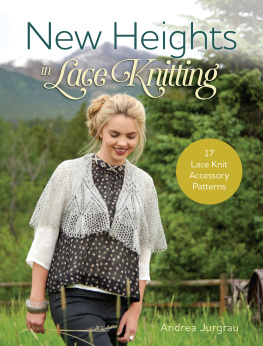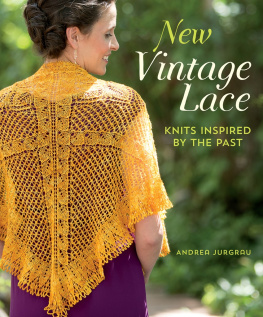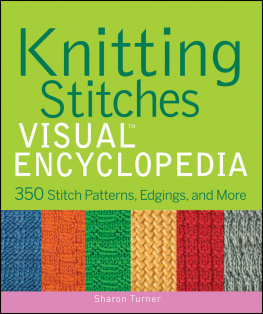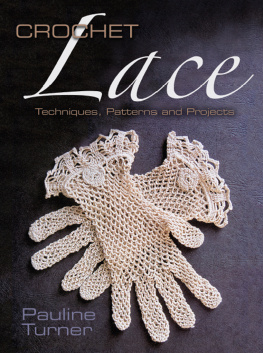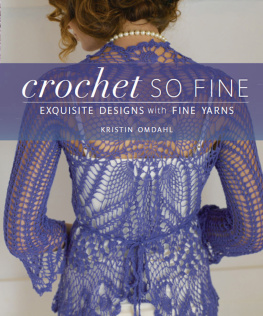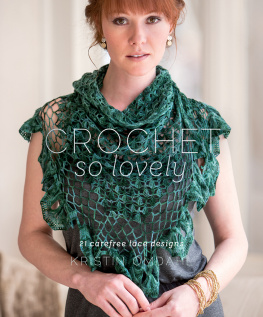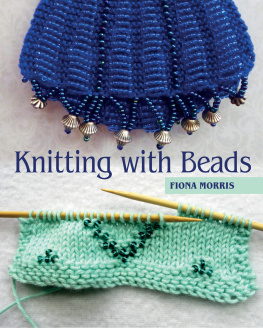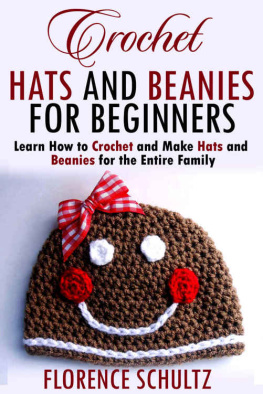Contents
Guide

17 Lace Knit Accessory Patterns
Andrea Jurgrau

DEDICATION
This book is dedicated to the memory of Lucy Voulgaris, my mother-in-law, who loved hiking and backpacking and shared that love with her children. In turn, my husband, John, shared that love with me.
CONTENTS
Chapter 1
Materials
Chapter 2
Techniques
Chapter 3
The Fine Art of Swatching
Breakneck Ridge
Storm King Scarves
Chapter 4
Projects 1
Hikes, Treks, and Moderate Climbs
Costa Rica
Corcovado Mitts
Kathmandu
Prayer Flag Scarf
The Inca Trail
Machu Picchu Beanie
Chamonix to Zermatt
Alpine Garden Cowl
Mont Blanc
Chamonix Lace Socks
Mont Blanc
Chamonix Beanie
Mount Kosciuszko
Charlotte Pass Crescent Wrap
Chapter 5
Projects 2
The Seven Summits
Australia/OceaniaPunck Jaya
Oceana Shawl or Throw
AntarcticaVinson Massif
Diamond Dust Wrap
EuropeMount Elbrus
Persian Sunrise Shawl
AfricaMount Kilimanjaro
African Violet Shawl
North AmericaMount McKinley
The Denali Wrap
South AmericaAconcagua
Indiecita Shawl
AsiaMount Everest (Qomolangma)
Goddess of Infinite Giving
Chapter 6
The Eighth Summit
Geometry of a Triangle
Franconia Traverse Wrap
A Scalene Triangle
Pacific Crest Shawl
An Equilateral Triangle
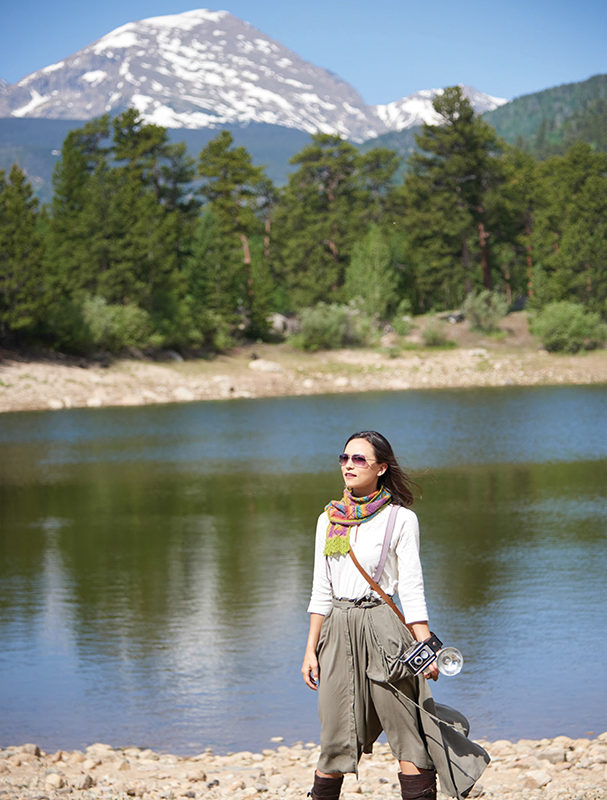
INTRODUCTION
The lore of the seven summits calls to every mountaineer. Documented in the 1988 book of the same name by Richard (Dick) Bass, the seven summits refer to the tallest mountain on each of the seven continents. Of course, the list is not without controversy, both nationalistic and political.
I consider myself an armchair mountain climber. I like to hike and climb, but I am fair weather. A hike on a lovely day is just my cup of tea. Put a heavy pack on my back and with a little sunshine you can drag me up a modest mountain. Toss in some rain and I am not smiling. Add some snow, ice, and a bit of high altitude... well, lets just say I can meet you at the bar when you get back and hear all your war stories!
Summiting a mountain always begins with a few simple steps. And as it is with climbing, so it is with knitting. Basic knit, purl, and yarnover stitches can come together to make lace that is simple but elegant; and, for those seeking further adventures, these very same stitches can unfold into spectacular designs.
So I think of this book as a knitters approach to the seven summits. It is proverbial mountain climbing for lace knitters who are adventurous; delighted by the basics, yet yearning for more.
This collection includes seven significant projects, each inspired by one of the major summits. Throw in a few slightly less complex projects as homage to the controversial peaks, then add a few treks to train for the big climbs, and you have a cross-globe mountaineering tour for lace knitters. Ill bring the yarn and you bring the ropes. See you in Kathmandu.
All the mountain heights listed were accurate at the time I designed these pieces, but glaciers melt and shift and earthquakes happen. The earth is always changing, so consider them approximate!

Chapter 1
MATERIALS
For me, knitting is a process. Its as much about the creating as it is about the finished product. With that in mind, selecting materials isnt just about the end result; its about the pleasure gotten from the knitting itself. Along with choosing materials appropriate for the end product, choose materials that youll find pleasurable to work with. Take care in choosing the yarn and beads for each project and youll find enjoyment from cast-on to bind-off!

iStockphoto.com/earleliason
YARN
There are lots of yarns on the market that are ideal for lace knitting. Many are available from small yarn companies and independent dyersyoull find a selection listed in the on page 138. I delight in using unique yarns whenever I can. The trick in lace knitting is to find the right combination of yarn and pattern. Choosing just the right yarn for a lace project is a large part of the fun. Lace yarns are available in a huge range of colors, dye techniques, weights, fiber content, and construction, and youll want to consider all the elements when making a choice. Each characteristic will contribute to a unique process and end result.
The beauty of knitting lace accessories is that yarn substitutions are relatively easy. Most yarns of similar weight and fiber content will behave the same as those shown in the projects. Of course, its always a good idea to knit a generous swatch and block it to make sure that the yarn youve chosen will work well with the pattern. Because most of the projects in this book require less than 800 yards (732 m), they provide the opportunity for you to experiment with yarn and color choices without too big an investment in money or time.
COLOR
When choosing a color, consider both the process and the finished object. I always choose colors that Ill enjoy working with as well as wearing. In general, light colors are easier to see as you knit and they show off lace patterns well; solid colors show off lace patterns better than semisolids and tone-on-tone yarns, but these can produce nice effects when used judicially.
For the most part, I follow the rule that if the stitch pattern is complicated, the yarn shouldnt be. However, if the values or tones of the colors are very close, as in the on page 106, variegated yarns can add pleasing visual dimension. If the colors in the yarn are quite different in tone or the values are very different, the yarn may dominate to the point of obscuring the lace pattern.
Tone-on-tone colors can work well, as long as the contrast between the shades isnt distracting. For the on page 106, I chose a yarn that has significant color variation, but all the colors are closely related in tone. Because the lace motif is bold, it isnt overpowered by the variegation in the yarn.
Yarns that have long color repeatsthe longer the repeat, the betteralso can be very nice, but be sure to knit a swatch to be sure you like the effect. Gradient yarns (those that progress from one color to another through the entire skein) such as the yarn used for on page 42.
WEIGHT
Keep in mind that laceweight is a rather generic term that encompasses a wide range of thicknesses. The American Craft Yarn Council (CYC) designates any yarn lighter than fingering weight to be laceweight, which they designate as #0 Lace. This category includes yarns at 600 yards (549 m)/100 grams to yarns at 1,700 yards (1,554 m)/100 grams and right down to sewing thread. When choosing a laceweight yarn, pay attention to how many yards are in 100 grams. If you havent worked with very fine yarn before, I suggest you begin with one of the heavier yarns in the category, and progress from there. See the box below for a general range in yardages for laceweight yarns.

